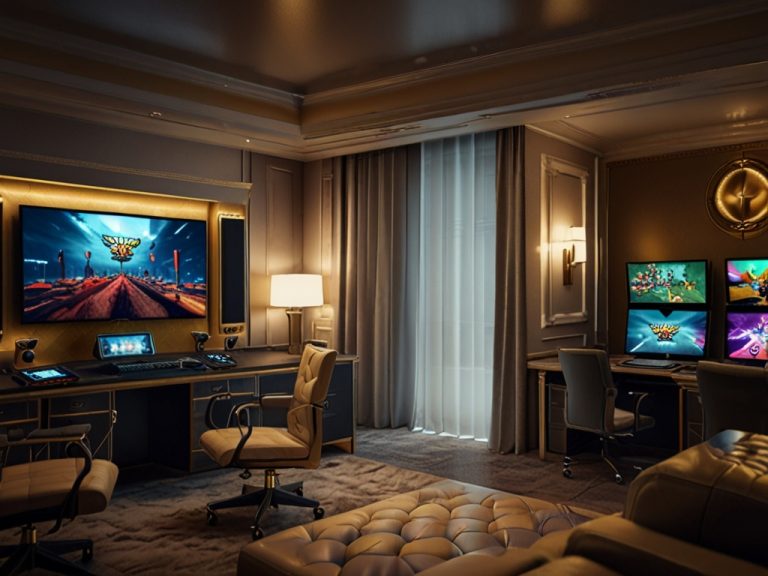Tl;dr – The Chinese Metaverse
- China’s metaverse market could value €88 billion by 2030.
- While Europe explores the Web3 of decentralized blockchain technology, China’s digital landscape operates within Web2 via platforms like Tmall, WeChat, Roblox, and Xi-Rang.
- Rimowa, Burberry, DFS, Dior, and Louis Vuitton have successfully launched immersive experiences, NFTs, and virtual worlds to Chinese consumers.
- European and American luxury brands should start making preparatory steps for the metaverse. With the launch of Apple Vision Pro and the spread of spatial computing, this will only become more necessary.
Say the word ‘metaverse’ in Europe and you might face misgivings: fuelled by Meta’s virtual rollercoaster, it’s been an annus horribilis. But hold that thought, because the metaverse is thriving in China. A younger, technological savvy market with ambitious digital expectations has created demand for innovative, immersive luxury brand experiences.
Let me guide you through the successful activations, explore the strategies Luxury brands use and explain how they differ from the approach in Europe. Finally, I’ll outline a few important lessons that could shift the needle for any brand.
The Chinese Metaverse Market
The Chinese metaverse market is exploding, its value forecast to hit €88 billion by 2030 (nearly 20% of the total global projected value!). Unlike growth in Europe and America which relies primarily on private equity and venture capital, in China, it’s driven more by technology corporations. Baidu, Alibaba, Tencent, and Xiaomi (BATX) are the biggest tech firms in China. And they’re all investing heavily in metaverse technology.
We’re talking about everything from virtual storefronts, Augmented Reality (AR) and Virtual Reality (VR), to gaming, 5G, Artificial Intelligence (AI) and avatars. For Maisons intent on capturing the value, any strategy is linked to the way digital engagement is ingrained into Chinese daily life. As Regina Zeng, Digital Innovation Lead for LVMH China, says, “Chinese consumers prefer immersive environments.”
Web2 Not Web3
A relatively small number of platforms, most notably TMall, Roblox and Xi-Rang, lead the market. However, WeChat reigns supreme. Although it isn’t quite “China’s app for everything,” billions use the messaging app for an increasing number of everyday habits, from viewing interactive content and live streaming, to e-commerce and gaming.
Now the BIG difference. While China’s digital landscape is booming, it still operates within a Web2 framework. The aforementioned platforms give brands a multitude of connection points with customers – AR, VR, 3D modeling, e-commerce, gaming and live streaming – however, their underlying infrastructure, like that of WeChat, is built on an internet lacking the decentralized, blockchain-based foundations of Web3 we speak most about at Forward.
Further, although the metaverse appears in China’s Five-Year Plan – a series of social and economic development initiatives issued by the Chinese Communist Party – it doesn’t include cryptocurrency payments or decentralized, open-source virtual worlds. Instead, the focus is on CBDCs (Central Bank Digital Currency) and centralized blockchain technology.
What Are Some Of The Chinese Metaverse Strategies?
The emphasis in China is on immersive experiences and gaming. “Our strategy is to try to help Maisons build their digital infrastructure and accelerate creating digital assets and 3D models of their products,” says Regina. “Then we can add elements like virtual spaces and virtual humans to form a more comprehensive journey.”
What’s the best way to start executing on strategy? Consider combining new store openings with a game launch (Louis Vuittion), or using immersive 3D modeling tools (Rimowa) on an e-commerce platform to boost sales whilst digitizing your product line. How about copying Dior and using virtual KOLs (Key Opinion Leaders) for a metaverse PR campaign? Other digital strategies include brand collaborations, virtual catwalks, phygitals and digital collectibles. Quite a selection. Let’s have a look at some in more detail.

LVMH Activations In China
- Rimowa’s Immersive Experience: Rimowa used 3D and AR to craft an immersive shopping experience on Tmall. Customers could personalize their bags and inspect them in 3D before purchase. We know you enjoy a tangible KPI: Rimowa got a 17% boost in conversion rates, a 5% increase in time spent on platform, and a remarkable 60% increase in offline engagement!
What caused the success behind Rimowa’s strategy? They bridged the physical and digital world and gave their customers an enjoyable and immersive – not to mention how simple it was to use – shopping experience.
- Burberry’s NFT: Burberry was the first luxury brand to sell NFTs on WeChat! Congrats to the team! Featuring 360 digital collectibles, the collection gave Burberry double-digit growth in Q3 performance.
The key to this success? First mover. Being the first to tap into the growing trend of digital ownership in China – consumers don’t just want physical products, but also digital ones.
- The DFS Metaverse: DFS launched an immersive virtual world, not too dissimilar to the LVMH Journey. It gave the luxury brand 159,000 new followers and 122,000 members. Not bad.
The success of this campaign highlights the importance of creating shared experience and immersive, 3D browser-based worlds.
- Dior’s Virtual Fashion Show: Dior held a fashion show in Xi-Rang, showcasing its 2023 ready-to-wear collection. The show created a lot of social ‘buzz’ in China.
Dior’s success underscores the power of experiential marketing in the metaverse. Self-governed worlds provide a unique canvas for storytelling and (shared) immersive experiences for brands.
- Louis Vuitton Plays Games: In conjunction with the launch of a new store in Chengdu, Louis Vuitton created “Mah Jump.” The game attracted thousands of (mostly Gen Z) users. They played six times on average and, most interestingly, shared the game with others in large numbers.
Louis Vuitton’s game highlights the potential of gamification in brand strategies. (Read our recent article on the synergy between gaming and Luxury.)
Here’s a question for you: Do you see a common thread linking these projects? There’s a blend of physical and digital experiences, a focus on digital ownership, community-building, experiential marketing, and interactivity. Further, virtual fashion shows, games, immersive worlds and 3D models all inject entertainment into a brand’s DNA. This is incredibly powerful as it resonates with that ‘digitally savvy Chinese audience’ we described at the beginning.

Apple Vision Pro And What European Maisons Can Learn From China
European and American Maisons can learn much from China. Regina underscores the imperative of readiness. “To flourish, Maisons must take preparatory steps,” she says. “This includes making 3D assets, ensuring ample bandwidth and venturing into the realm of virtual humans and IP characters.”
The next step is very important. If you think your Maison has missed the boat, think again. Regina’s affirmation that you must take preparatory steps not only applies to the current landscape, but to what comes next. “The entrance to the metaverse is not yet advanced enough,” she says. “We have VR glasses, but most people don’t use them, which means we access these worlds via phone or tablet. If we don’t solve this ‘entrance’ question, there’s no real metaverse experience.” But as Regina says this, we know she’s already thinking of spatial computing and the biggest company in the world. “Apple Visionpro could really be a game changer!”
In Conclusion
Digital assets, digital identities, virtual worlds. The metaverse in China is a dynamic reality and Maisons have a distinct approach to it. For the moment it lacks the decentralization and blockchain that is part of the Web3 revolution we see in Europe, but it more than makes up for that with its strategy of embracing 3D, AR and virtual worlds, both in browser versions and within platforms like Roblox. But as ever, what comes next is the big question, and the most exciting.



